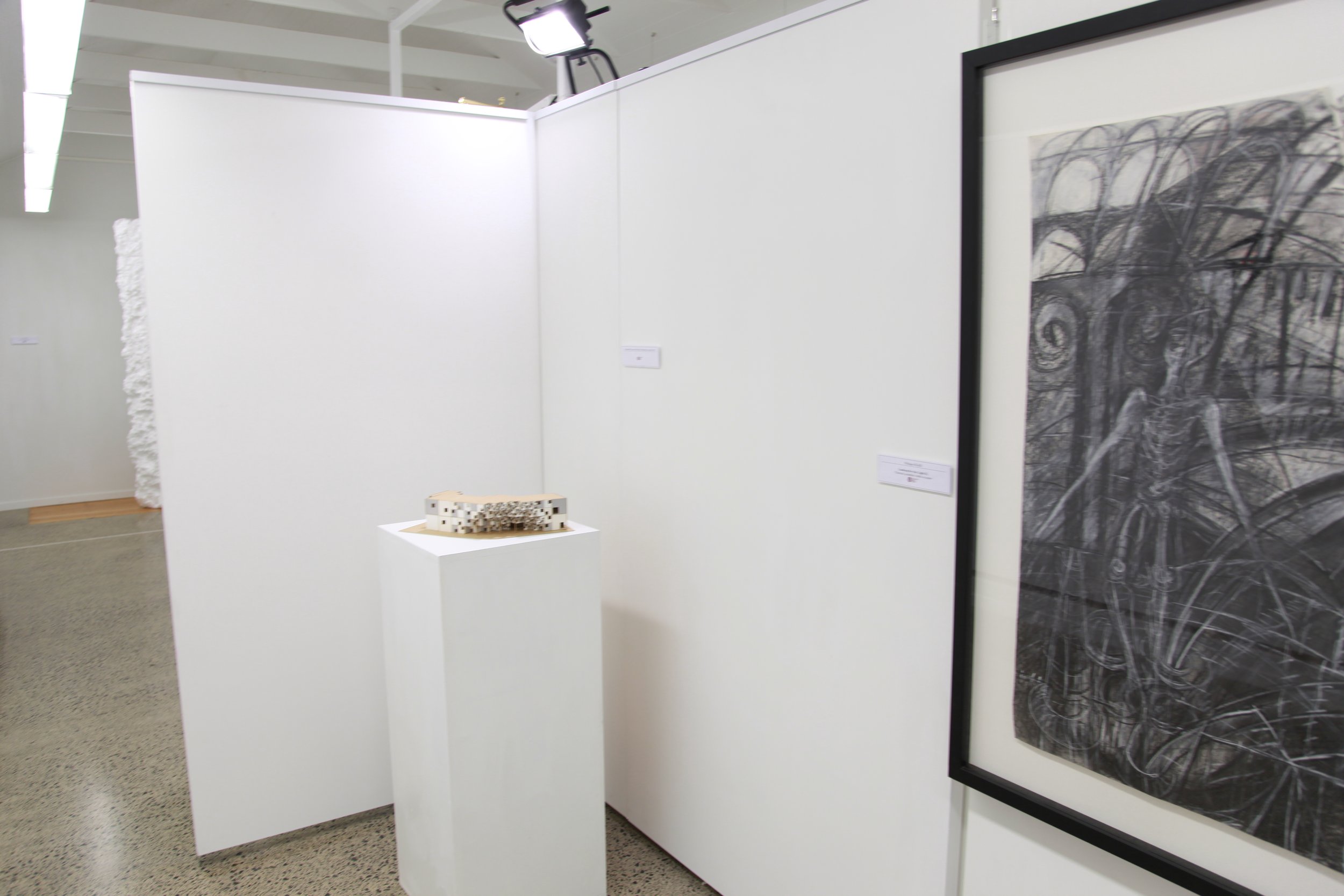Structures
7 March, 2012 - 27 April, 2012
Long Gallery
Brit Bunkley, Planter (2002)
William Sutton, Ruins of Moorgate (1947)
Structures is an exhibition of works, from the Arts Trust’s collection, that speak of architectural concerns either through form or content. The selection on display encompasses a wide range of styles from the mid-20th Century to the contemporary. One early painting, William Suttons ‘Ruins of Moorgate’ from 1947, represents a view of an East London district in ruin from extensive World War II bombing. This work, an early piece in Sutton’s long career (notably created when he was only thirty), is representational – a depiction of actual buildings in a real time and place. This approach forms a contrast with some contemporary works in the exhibition; which derive more from the imagination and utilize media in a non-academic manner. For instance, Brit Bunkley designed the image in ‘Planter’ of 2002 on a computer. This work, printed on photographic paper, represents a futuristic like structure that also resembles the ancient - a Mayan temple. Bunkley’s virtual world is a common thread in other more recent works (particularly by Serene Thain and Andre Tjaberings), perhaps addressing environmental concerns whereby utopia is the only escape. But present-day reality is not ignored altogether. A few artists (such as Richard McWhannell and George Baloghy) present actual environs in Auckland. Others show an address of contemporary concerns. Martin Whitworth’s small canvas ‘#12 State House 9’ of 2006 is implicitly suggestive of issues in relation to the state’s involvement with housing in New Zealand.
Several observations about contemporary art can be realized upon visiting this exhibition. One being that there has been a revival of drawing and particularly watercolour by contemporary practitioners. These mediums are not used as in past practice - as simply studies in the aim of producing large grand oil paintings. Contemporary artists with drawings and watercolours on display (such as Simon Esling, Robert Sly and Rachel Wells) provide the affirmation that these mediums are just as vital as oil on canvas. Another observation is that sculpture is still very diverse as an art form, particularly notable in the use and choice of media. This, like the use of watercolour today, is also a challenge of the art-historical hierarchy. It primarily arose from early 20th Century Modernism whereby artists used non-traditional materials, avoiding bronze and marble, to realize new possibilities. A key example in this exhibition is Shane McGrath’s ‘Holy Sepulchre’ of 2011 (a recent acquisition in the Arts Trust’s collection), made entirely of children’s building blocks. It is a biographical work, in which McGrath reflects upon his own upbringing in a staunchly Roman Catholic family and his subsequent loss of faith. He uses wooden blocks to form a model of the Holy Sepulchre Church in Jerusalem, bringing forth a playful questioning of religious indoctrination.













